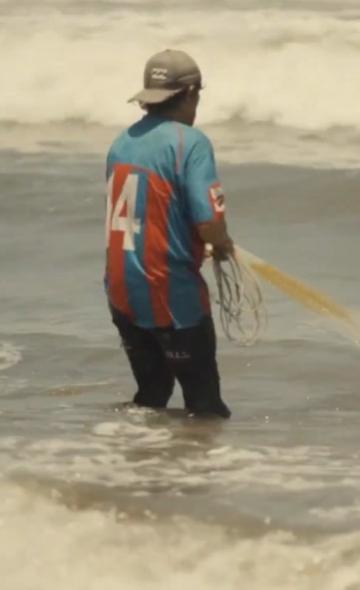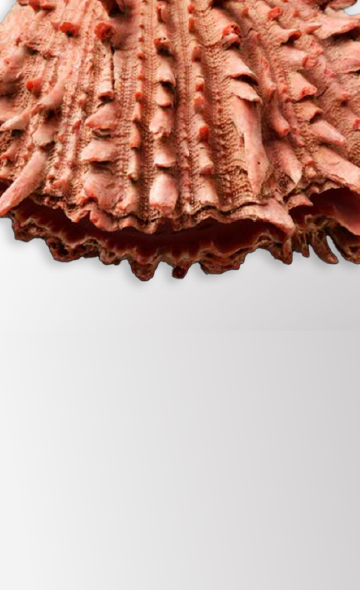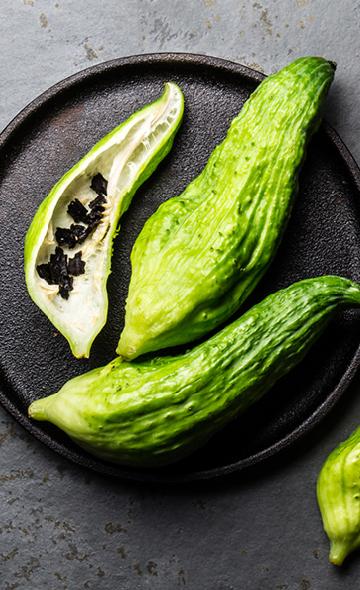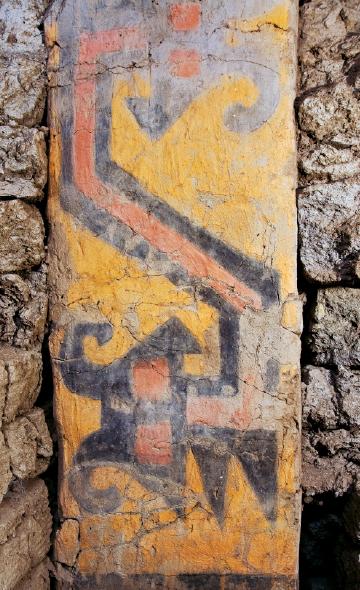- Visitors
- Researchers
- Students
- Community
- Information for the tourist
- Hours and fees
- How to get?
- Visitor Regulations
- Virtual tours
- Classic route
- Mystical route
- Specialized route
- Site museum
- Know the town
- Cultural Spaces
- Cao Museum
- Huaca Cao Viejo
- Huaca Prieta
- Huaca Cortada
- Ceremonial Well
- Walls
- Play at home
- Puzzle
- Trivia
- Memorize
- Crosswords
- Alphabet soup
- Crafts
- Pac-Man Moche
- Workshops and Inventory
- Micro-workshops
- Collections inventory
- News
- Students
- Ancestral know-hows of La Libertad
News
CategoriesSelect the category you want to see:
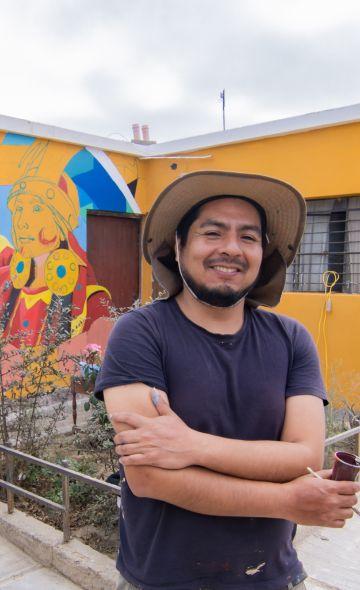
Magdalena de Cao to Once Again Host an International Mural Art Gathering ...
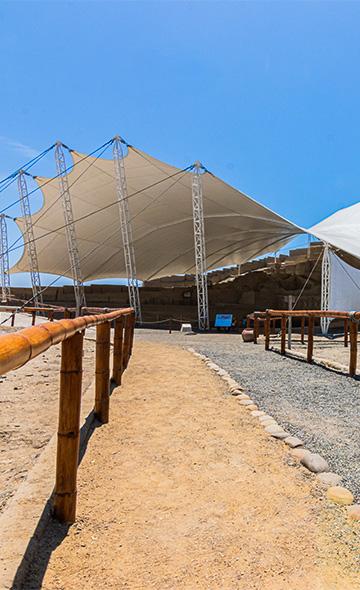
Explore El Brujo Through Virtual Tours: Culture and History at a Click ...
To receive new news.
By: Complejo Arqueológico El Brujo
The societies that existed before us have bequeathed upon us a series of ancestral know-hows that continue to be part of our lives. If we take some time to delve into these know-hows, we will see that there is a wide range of knowledge that, to this day, is current and applied in the communities of the region where the aforementioned societies had influence. Here, we detail for you some of the ancestral know-hows of the northern area of Peru:
Traditional fishing
Although fishing is an economic activity that has been practiced for thousands of years in our country, the oldest and best preserved fishing tools are found in the Huaca Prieta, a pre-ceramic building that is part of the three monumental complexes of the El Brujo Archaeological Complex (CAEB).
The discovery, which took place in the 1940s, was a 30-meter-long net with eight gourd floats and stone weights. Nowadays, there are still fishermen on the north coast who continue to use nets to catch fish, although instead of wire nets they now use nylon nets.
In fact, in the locality of Magdalena de Cao (area of influence of the CAEB) a significant number of people are engaged in this activity, so, day after day, we see fishermen throwing their regular or cast nets into the sea to catch crabs and different fish in the area. The men who continue to practice this activity see in it an opportunity for growth, which allows them to sustain their homes and educate their children.
Textiles
This is an economic activity considered to be extremely important in the ancient Peruvian towns. On the northern coast of Peru there are impressive samples of textiles, such as those found in the Zaña valley, where the oldest cotton has been discovered, dating back to 5,800 B.C. and in the case of CAEB, the oldest traces of blue-dyed cotton date back to 4,000 B.C. and these were found at Huaca Prieta.
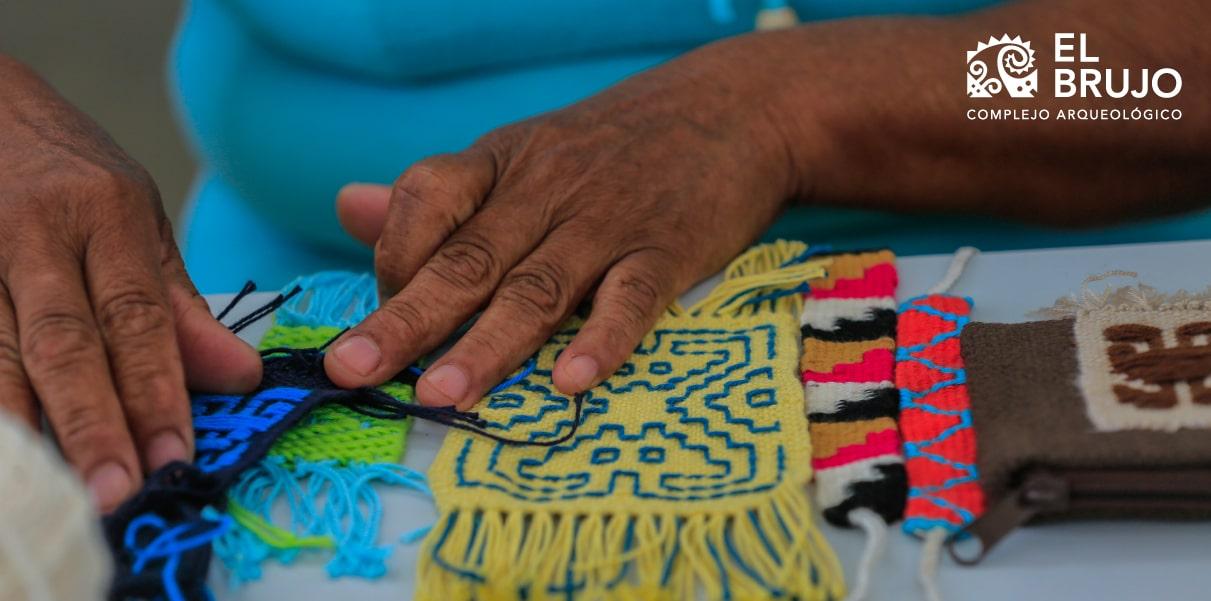
An example of the impressive textile techniques of the Mochica can be seen in the funerary bundles discovered in the tomb of the Lady of Cao, an important personage of the elite.
Unlike fishing, whose techniques have been inherited and maintained over time, textile techniques have been lost over the years and, therefore, now there are few people who continue to apply them. Among the inherited techniques, we have brocade, twill, knotting, grooved tapestry, wefts, and floating warps.
The adobe
The ancient Peruvians developed different construction techniques that are still used today. One of them is adobe, which consists of the assembly of sun-dried mud blocks, whose oldest samples date back more than 7,000 years. With the passage of time, starting in the 10th century A.D., adobe became the favorite of the northern coast of Peru and was used for the construction of edifices.
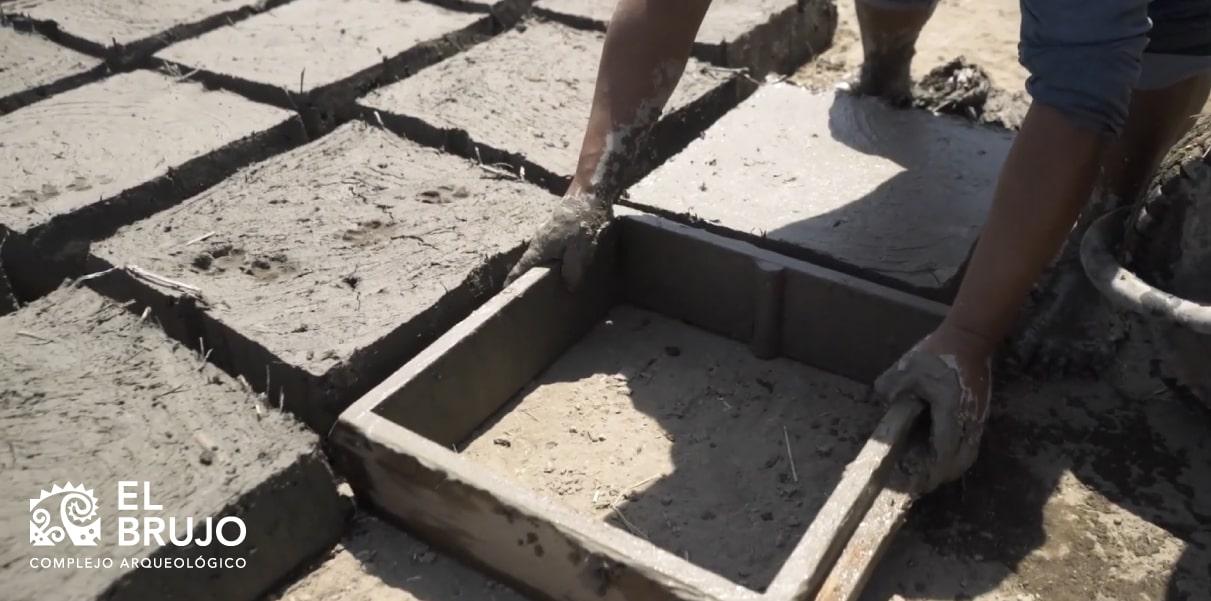
Nowadays there are famous huacas that had been built with this element and, still, in several valleys of the Peruvian coast it is an ancestral knowledge that continues to be practiced. Adobe artisans are people who have inherited their knowledge from their parents, and their parents from theirs, and work every day to produce adobes with which people can build their homes.
The one-year chicha
Chicha is a drink that has been consumed for centuries by men and women from different parts of Peru. It is a fermented drink that can be made from products such as quinoa, molle, peanuts or maize. Currently, it is still produced and consumed in different regions of the country.
With the arrival of the Spaniards, the way native chicha was prepared changed, as inputs such as sugar cane were added. This is how products such as one-year chicha, traditional from Magdalena de Cao, emerged. It is made with jora (sprouted corn) and chancaca (panela) that comes from sugar cane. Currently, this drink is considered a National Product and distinctive of Magdalena de Cao. Thanks to it, not only is an ancestral tradition preserved, but tourism is also promoted in the locality.
These are four ancestral know-hows of Magdalena de Cao that you should know about. Take advantage of your next visit to the locality and experience them first-hand. We invite you to continue to learn more with the series "Ancestral Know-hows" of the El Brujo archaeological complex, which seeks to disseminate and preserve customs, techniques and valuable knowledge from master artisans from the communities in the area of influence of the El Brujo archaeological complex.
You can also read:
1. Moche or Mochica culture? Answering frequently asked questions
2. Pre-Columbian ancestral culture and art in Peru
3. Historical Tourism in El Brujo: A Journey into Peru's Past
Students , outstanding news


